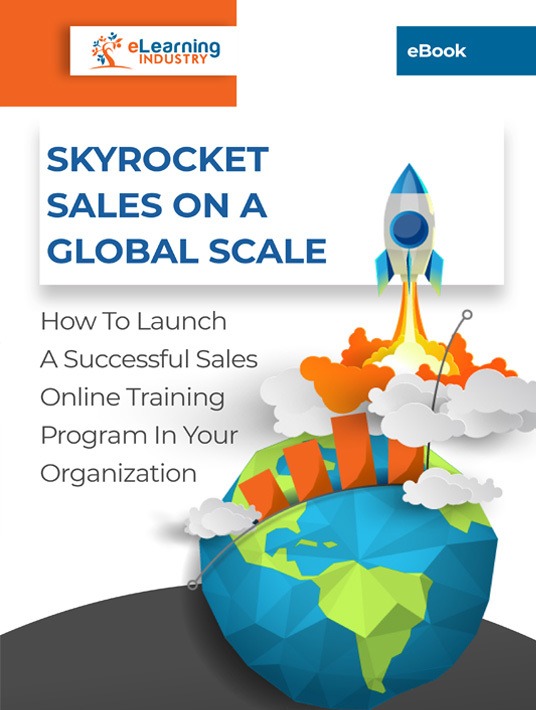Top-Notch Sales Online Training Process Stages For SMBs
Making the transition from a local company to a worldwide organization is exciting but stressful. You think of all the new opportunities a global audience will bring. However, you must ensure that your employees are up to the challenge and that new staffers are onboarded effectively. This can be tricky when you’re still an SMB on a tight budget, even if going global will hopefully alleviate those financial woes. Is there a simplified process you can follow to ease the transition and train your sales team? How can you use existing online training resources to reduce spending without compromising quality? Let’s look at 8 sales online training process stages for SMBs that want to take on the world.

1. Assess Your Sales Online Training Strategy
What are your current sales online training objectives and outcomes? Are there any gaps in your strategy that might hinder future success? Conduct a Training Needs Analysis to get a holistic overview of your sales online training program as it stands now. Are employees satisfied with the level of interactivity and personalization? Do you notice a spike in compliance violations? Are staffers able to apply what they’ve learned or does your program focus solely on theoretical knowledge?
2. Reevaluate Your L&D Budget And Timeline
Take a closer look at your L&D budget to identify areas where you can cut costs. As well as aspects of your program that may require more online training resources. You should also develop a detailed implementation timeline. You’ve probably already created an expansion schedule to map out your business growth. However, you must also create a separate agenda for employee development so that they’re up-to-speed.
3. Identify Gaps Between Point A And B
You’ve already identified areas for improvement in step 1, now it’s time to determine how to address them cost-effectively. How will you bridge performance gaps and reinforce favorable behaviors among the sales team? Which activities will help them build real-world experience and prepare for international clientele? Identify how you’re going to get from Point A to B so that your sales department is ready to go global.
4. Gather Your L&D Team
Even if you plan to outsource custom content development, you still need an in-house team to deploy and track your initiatives. This typically includes Instructional Designers, SMEs, and LMS admins. This group is also responsible for content updates and ongoing Training Needs Analysis. In some cases, you may even need translators for remote employees and/or localization teams. Host a pre-launch meeting to get everyone on the same page, then regular catch-up sessions to maintain open communication.
5. Choose The Best eLearning Content Provider
This step in the sales online training process involves multiple phases. The first is to determine what content you’ll develop in-house and what you’ll outsource. Then develop a separate budget that’s strictly for eLearning content providers. The next stage is to use an online directory to choose the best outsourcing partner for your sales online training course. Ideally, they should have experience in your niche and offer a broad range of solutions. Then it’s time to move onto the interviews and test eLearning projects to find the right company at the right price.
6. Develop Online Training Content For Your Global Workforce
Invest in rapid eLearning authoring tools for your team or choose an outsourcing partner who already has the necessary software. If you’re developing online training content internally, start with an online training storyboard to map out the core activities and JIT resources. In the case of outsourcing, host a joint team meeting to streamline collaboration and clarify roles. Bear in mind that many sales online training requirements are region-specific. For example, compliance rules and regulations vary based on the employee’s location.
7. Launch Test Activities With eLearning Feedback
Before you roll out the entire sales online training process to front-end users, launch test rounds to see how they respond. Invite a few employees and external participate to participate in online training activities. Then host focus groups or online discussions to get their eLearning feedback. Were the online training tools effective? Did they create an emotional connection? Were employees able to understand the core concepts or did they experience cognitive overload? What would they change about the online training experience? Compile the user data, make the necessary changes, then host a follow-up eLearning feedback session. This saves you the time and expense of deploying a global-scale L&D program, only to discover that it falls short of expectations.
8. Deploy Online Training And Measure Results
Once you’ve worked out all the glitches, launch your sales online training strategy and measure employee progress. LMS metrics allow you to track how they’re performing and disclose personal areas for improvement. As well as emerging online training challenges that are the result of going global. For instance, you need to include translated subtitles for external partners who speak English as a second language. Or improve mobile accessibility so that remote employees still have the same sales online training benefits. This is where your dedicated L&D team comes into play. They’re on-hand to make recommendations, offer follow-up support, and custom tailor online training resources based on evolving needs.
These sales online training process stages are adaptable based on your organization’s needs. For example, you may have to deploy multiple test rounds in different markets to improve your design. Or hire additional staffers to develop online training resources in-house as opposed to outsourcing. It all depends on available online training resources and the implementation timeline. As well as your overall sales online training objectives. For this reason, it’s crucial to reevaluate your needs and expectations before moving forward with global expansion.
As a general rule, your sales team should be well-rounded. Is a new sales online training course worth the investment? Download the eBook Skyrocket Sales On A Global Scale: How To Launch A Successful Sales Online Training Program In Your Organization and get to know how to launch, enhance and retain successful programs in your organization.

